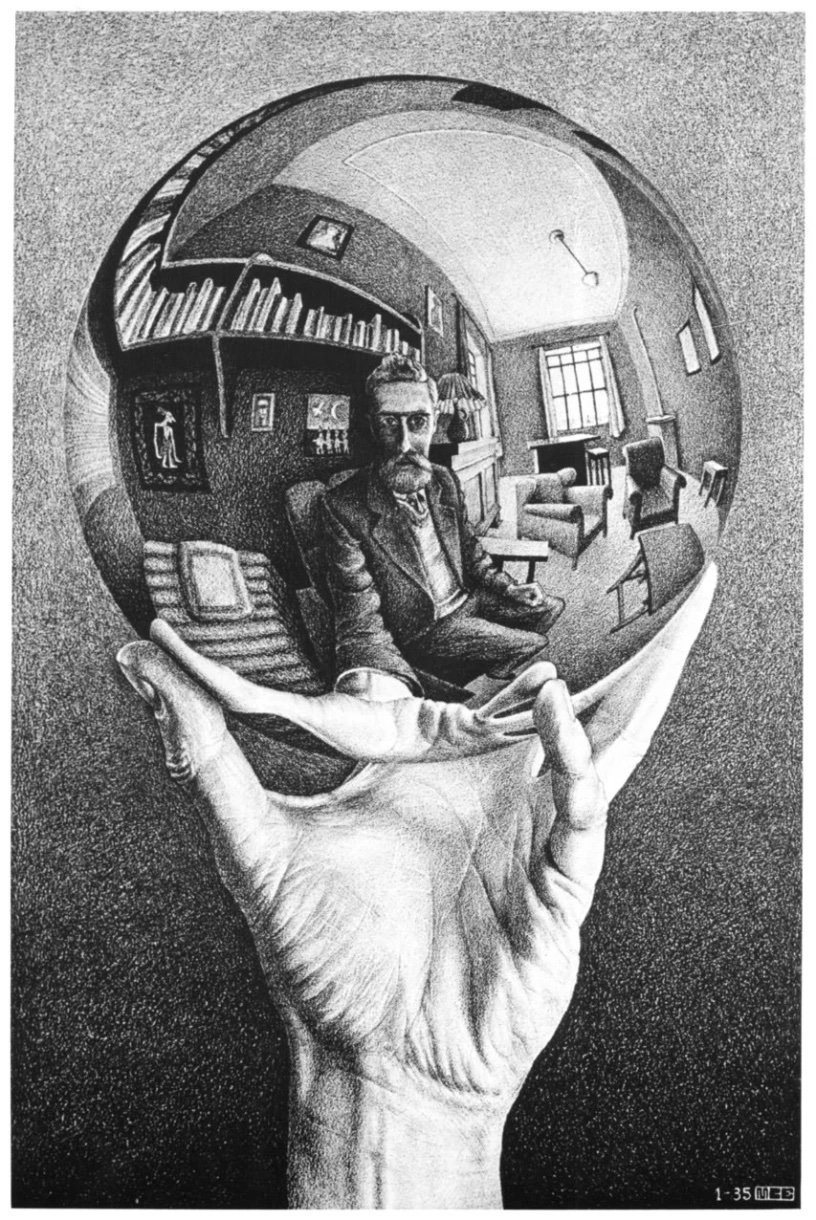What if the innovative graphic designer M.C. Escher applied for an O-1 visa? Under which criteria would he qualify?
Whether or not you are familiar with his name, you are certainly familiar with his work.
M.C. Escher’s mind blowing drawings and etchings that play with perspective and perception are incredibly well known and exist at an iconic level of pop culture recognition most artists only dream of.
Maurits Cornelius Escher was born June 17th, 1898 in Leeuwarden, Netherlands.
At first the young Escher wanted to be an architect, but after completing school he travelled through Italy and fell in love with drawing the countryside, making sketches for what would later become his first lithographs, woodcuts and wood engravings. Some of those elements would appear in his later “impossible” art, such as the background of “Waterfall” from 1961.
In 1923, at the time of his first exhibition in the “Circolo Artistico Senese” in Siena, Escher’s work was mostly realistic. He created landscapes, portraits, seascapes and still lifes that showed a growing mastery of drawing and printmaking, but is a far cry from the mystical, magical M.C. Escher we know today.
After leaving Italy in 1936, Escher began to experiment with altered reality and pattern metamorphosis, something he called “mental imagery”, throughout WW II. By the 1950s he was successful enough to be featured with several other prominent graphic artists in an exhibition in Antwerp, Belgium.
Day and Night - 1938
This exposure of his now burgeoning and increasingly unique style led to articles in an English art magazine “The Studio” and articles in both Time and Life magazines.
If he were alive and applying for an O-1 visa how would Escher qualify as an O-1B artist of extraordinary ability?
To start with, let’s remember how USCIS defines the O-1B standard…
“Extraordinary ability in the field of arts means distinction. Distinction means a high level of achievement in the field of arts evidenced by a degree of skill and recognition substantially above that ordinarily encountered to the extent that a person described as prominent is renowned, leading, or well-known in the field of arts.”
Throughout the 1950s Escher and his work became more and more popular. He gave lectures around the world. He received the Order of Oranje Nassau in 1955.
Finally, in 1968 at the Haags Gemeentemuseum (now Kunstmuseum Den Haag), Escher’s first retrospective exhibition was held in honor of his 70th birthday.
In 1955, M.C. Escher was knighted and he was awarded the city of Hilversum’s Culture Prize in 1965.
In 1967 he received a royal distinction again.
As a result of his influence on graphic arts, it is clear that M.C. Escher established himself as an artist of distinction “substantially above that ordinarily encountered”.
So how do we prove this for an O-1? We have 6 criteria. And we only need to show that 3 of those alternate criteria apply.
We believe Escher would have been able to satisfy the following three alternate criteria:
(1) Evidence that the beneficiary has achieved national or international recognition for achievements, as evidenced by critical reviews or other published materials by or about the beneficiary in major newspapers, trade journals, magazines, or other publications.
In 1958 he was featured in Time magazine once again and had his first important exhibition in Washington D.C.
In 1961, the well renowned art historian E.H. Gombrich wrote about Escher’s work in the Saturday Evening Post.
These are just amongst two of the many published articles and features about Escher and his artistry.
Hand with Reflecting Sphere - 1935
(2) Evidence the beneficiary has received significant recognition for achievements from organizations, critics, government agencies, or other recognized experts in the field in which the beneficiary is engaged. Such testimonials must be in a form which clearly indicates the author's authority, expertise, and knowledge of the beneficiary's achievements
Although it took the industry quite a while to recognize his genius, Escher was revered by artists and critics in his field and his works were frequently celebrated through exhibitions.
Escher’s works were exhibited in some of the most celebrated exhibitions and prestigious galleries throughout the world, including: the National Gallery of Art Washington D.C. in the United States and the Haags Gemeentemuseum (now Kunstmuseum Den Haag), in the Hague, Netherlands.
There is no doubt that Escher would have been able to obtain testimonials from the world’s foremost art critics, professors, patrons and gallery owners who would have confirmed Escher’s significant contributions to the field of graphic arts.
Union Band - 1956
(3) Evidence that the beneficiary has a record of major commercial or critically acclaimed successes, as evidenced by such indicators as title, rating, standing in the field, box office receipts, motion pictures or television ratings, and other occupational achievements reported in trade journals, major newspapers, or other publications
Escher’s work entered into pop culture prominence by being featured on several pop and rock album covers throughout the 60s, 70s and 80s and even into the 2000s.
His work has been so influential that both Austria and the Netherlands have issued postage stamps commemorating the artist and his work.
In addition, his exhibitions received significant critical acclaim and were viewed by thousands of prominent artists, art students, art professors and patrons of the arts, as well as his fans in the general public.
Conclusion
M.C Esher’s ability to create works of art that master perspective and dimension, reality and fantasy, make him one of the greatest graphic artists of all time. His impact on the world of fine art and commercial art, as well as achieving a unique place in the pop culture pantheon makes M.C. Escher an exceptional artist of distinction.










